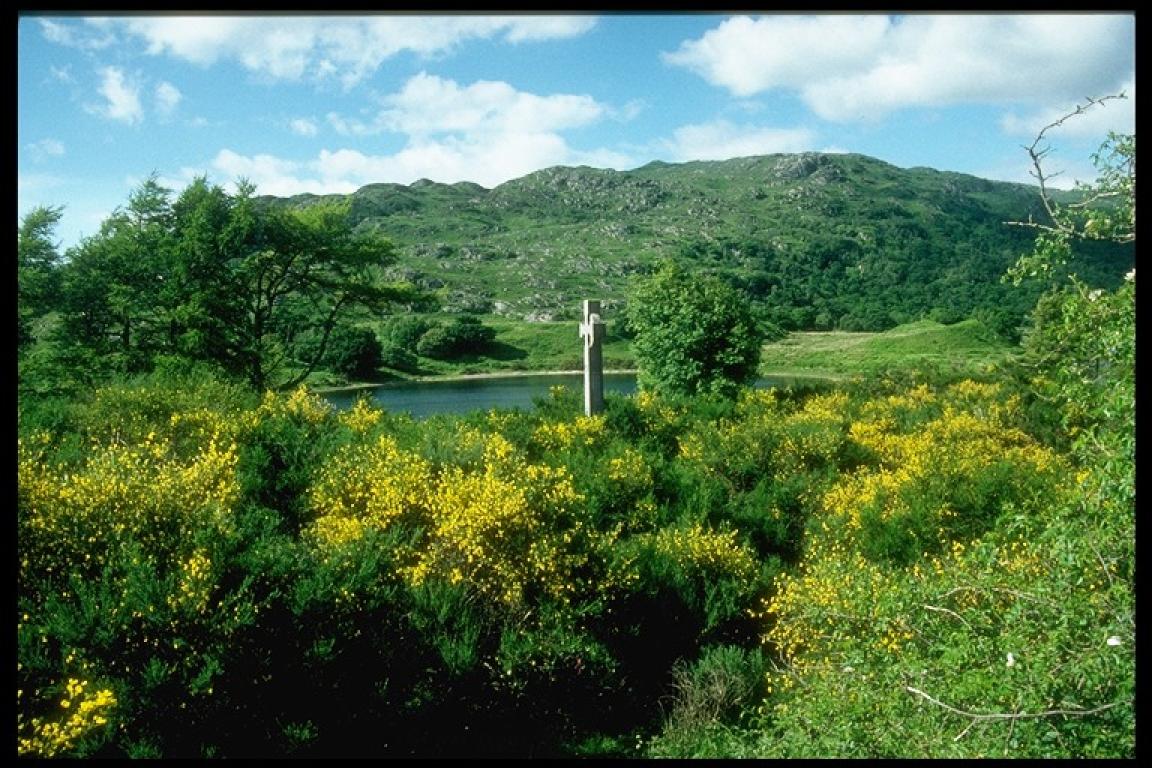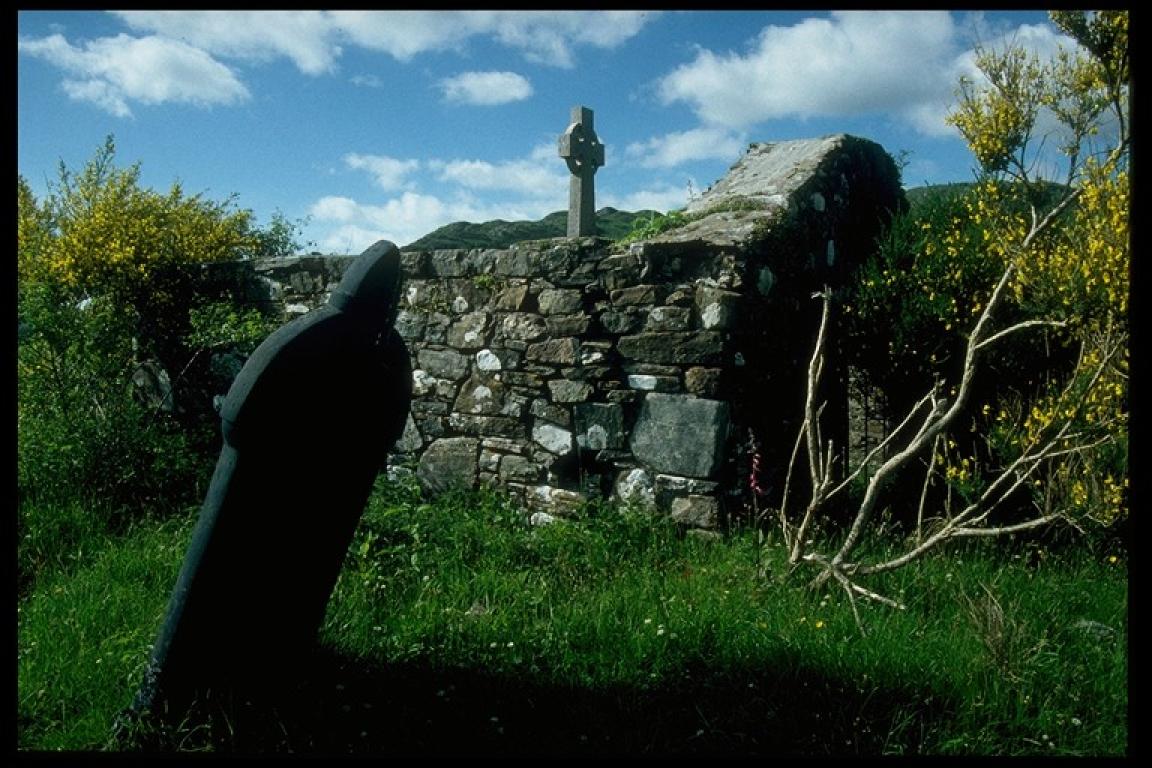
History and Mystery: The Story of Eilean Fhianain
Hello and welcome to the first blog in our new spotlight series ‘Behind the Story’. The Spirit of the Highlands and Islands team have been inspired by the stories you have shared with us and in this series, we will take a closer look at the history behind the places and events that feature on our Spirit: Stories archive.
This week, we have been drawn into the world of ‘Beauty and Mystery’, submitted by Morag Hughes - in particular, the mysterious St. Finan’s Isle, Eilean Fhianain. What is the history behind this fascinating island in Loch Shiel? Join us as we dive into the story of this iconic isle in Lochaber.
History of the Green Isle
Eilean Fhianain, St. Finan’s Isle, is the largest island in Loch Shiel and, as part of the Loch Shiel National Scenic Area, is known for its outstanding natural beauty. The long-standing history of the isle is held in similar regard with its chapel and burial ground designated as a Scheduled Ancient Monument.
Little is known about the early history of Eilean Fhianain apart from the fact that the isle takes its name from St. Finan, believed to be St. Finan the second bishop of Lindisfarne (Ordnance Survey 1970; Wild About Lochaber [no date]). An Irish monk who trained at Iona Abbey. It is said that, St. Finan resided in a cell on the island during his life’s mission to spread the Christian faith in the Highlands (Highland Historic Environment Record [no date]).
The medieval stone chapel on the island is believed to have been constructed on the site of St. Finan’s cell by Alan MacRuaridh – an early chief of Clan Ranald. With the chapel in place, the island became a site of pilgrimage and a burial ground for the Clan Ranald family until the end of the 16th century. The chapel also served as parish church of Sunart until the formation of the Ardnamurchan parish following the Scottish reformation. However, even when the parish church for the area changed, services may have continued at St. Finan’s up until the 1730s (Highland Historic Environment Record [no date]; Historic Environment Scotland 2017)
The chapel fell into ruin in the mid-17th century. The current building is a reconstruction from the 19th century with surviving medieval masonry incorporated into its eastern wall. Fortunately, the medieval altar survives, and the island is still used for burials to this day.
 Image provided by © Highland Council Historic Environment Record.
Image provided by © Highland Council Historic Environment Record.
View onto a large stone cross at St. Finan's Chapel, Eilean Fhianain.
The Mystery of the Bell of St. Finan's
As I was swimming past St. Finnan's Isle I heard a bell ringing.... Jim seemed a bit spooked by this as there were no boats or kayaks tied up at the jetty when we passed. He said he knew the sound of the bell on the island and it was definitely it...
Beauty and Mystery, Morag Hughes.
The early medieval bronze bell was once an iconic part of St. Finan’s Chapel. As an artefact of great historical and cultural significance, the hand bell has been an unwilling target of thieves since the 18th century.
The bell was first stolen in an organised theft by a group of British redcoat soldiers during the 1745 Jacobite Risings. On hearing the news, locals chased the thieves for 17 miles up alongside Loch Shiel. The ringleader of the group was reported to have been ‘tied to a tree and soundly flogged.’ According to local legend, the bell flew back to the island itself following the capture of the thieves (Donaldson 1923; The Scotsman 2018).
The bell remained safe for almost three centuries with few people visiting the isle each year. The increasing popularity of kayaking in Loch Shiel has subsequently seen a large increase in footfall to St. Finan’s isle in recent years. A second planned theft, estimated to have occurred in late June or early July 2019, has seen the bell stolen once more and it unfortunately remains to be recovered (Moidart History Group 2019; BBC News 2019; Campsie 2019).
 Image provided by © Highland Council Historic Environment Record
Image provided by © Highland Council Historic Environment Record
The graveyard at St. Finnan's Chapel, Eilean Fhianain.
The Spirit of Eilean Fhianain
We never found an explanation and Jim still talks about the mystery of the bell when we meet. Was it the ghost of St. Finnan urging me on? Sadly the bell was stolen last year.
Beauty and Mystery, Morag Hughes.
As we approach the third anniversary of the theft, there has unfortunately been no news of the whereabouts of the bell. Its loss has been devastating for the local community and its removal from its rightful spot by the altar of the chapel has undoubtedly impacted the essence of the island.
For many, objects like the bell of St. Finan’s Chapel represent vessels of long-standing community history and can be what some belief the ‘Spirit of the Highlands and Islands’ is to them. Establishing the current location of the bell is vital not only to restore it to its rightful place but also to once more bring life and light once more to Eilean Fhianain.
 Image provided by VisitScotland/ Paul Tomkins
Image provided by VisitScotland/ Paul Tomkins
View looking over the length of Loch Shiel, Lochaber.
References
BBC News. 2019. 'Cursed' bell stolen from Lochaber's St Finan's Isle. BBC News. [Online]. 24 July 2019. [Accessed July 2022]. Available from: https://www.bbc.co.uk/news/uk-scotland-highlands-islands-49095983
Donaldson, M. E. M. 1923. Wanderings in the Western Highlands and Islands, Revision. Alexander Gardner Ltd: Paisley.
Highland Historic Environment Record. [No date]. MHG4159 - St. Finnan's Chapel - Eilean Fhianain. [Online]. [Accessed July 2022]. Available from: https://her.highland.gov.uk/monument/MHG4159
Historic Environment Scotland. 2017. Eilean Fhianain Special Survey. [Online]. [Accessed July 2022]. Available from: https://canmore.org.uk/event/1031910.
Moidart History Group. 2019. Medieval bell stolen from Scottish burial isle. [Online]. 24 July 2019 [Accessed July 2022]. Available from: http://www.moidart.org.uk/datasets/Medieval%20bell%20stolen%20from%20Scottish%20island.pdf
Ordnance Survey. 1970. Ordnance Survey Archaeology Division Revision Programme Desk Based Assessment. [Online]. [Accessed July 2022]. Available from: https://canmore.org.uk/event/817934
The Scotsman. 2018. Medieval handbell among treasures found on Highland island. The Scotsman. [Online]. 18 April 2018 [Accessed July 2022]. Available from: https://www.scotsman.com/arts-and-culture/medieval-handbell-among-treasures-found-highland-island-586898
Campsie, A. 2019. Who stole this ancient bell from a lonely Scottish island? The Scotsman. [Online]. 26 July 2019. [Accessed July 2022]. Available from: https://www.scotsman.com/heritage-and-retro/heritage/who-stole-ancient-bell-lonely-scottish-island-1412355
Wild About Lochaber. [No date]. St. Finan's Isle. [Online]. [Accessed July 2022]. Available from: https://www.wildlochaber.com/ardnamurchan/history/st-finans-isle.
Further Reading
CANMORE: https://canmore.org.uk/site/22686/eilean-fhianain-st-finnans-chapel
Highland Historic Environment Record: https://her.highland.gov.uk/monument/MHG4159